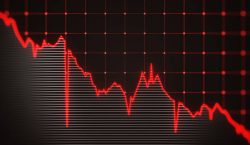


 MUTARE — Government is likely to miss its E20 mandatory blending target set for next month owing to low production of sugarcane needed to be fed into the Chisumbanje ethanol plant, the Financial Gazette has learnt. Last year, Energy and Power Development Minister Dzikamai Mavhaire announced that government would regularise the mandatory blending of 20 percent anhydrous ethanol with 80 percent unleaded petrol to make E20, by April this year.
MUTARE — Government is likely to miss its E20 mandatory blending target set for next month owing to low production of sugarcane needed to be fed into the Chisumbanje ethanol plant, the Financial Gazette has learnt. Last year, Energy and Power Development Minister Dzikamai Mavhaire announced that government would regularise the mandatory blending of 20 percent anhydrous ethanol with 80 percent unleaded petrol to make E20, by April this year.
As a build up towards E20, the blending threshold was first increased from E5 to E10 and then to E15 towards the end of last year. Owing to low sugarcane production, government had to revert back to E10 while at the same time extending its source base to Triangle Limited’s Tongaat Hullet, in order to augment sugar supply. Excessive rains affected sugar plantations in the Lowveld, resulting in a slump in ethanol production.
Chisumbanje, owned by Green Fuel, has 9 500 hectares of sugarcane plantations and produces an average of 200 000 litres of ethanol a day. Green Fuel had targeted to increase the daily production to 250 000 litres by end of last year but failed. Green Fuel general manager, Graeme Smith, said ethanol production would remain low owing to the “unfriendly” weather patterns being experienced currently.
“We are unable to send our team in the fields to harvest sugarcane and this has partly resulted in the low production of ethanol. The excessive rains that we experienced this year also affected our yields,” he said. Smith could, however, not be drawn into revealing the current ethanol production volumes at Chisumbanje.
“I am not at liberty to disclose that. I think the Zimbabwe Energy Regulatory Authority (ZERA) will be in a better position to give you those figures,” he said. Efforts to reach ZERA for comment were unfruitful by the time of going to press.
Athough Mavhaire was not entertaining questions when he was contacted for comment last week, late last year the Energy Minister told the Financial Gazette that the country would double its annual savings from fuel imports from the current US$48 million to about US$100 million once E20 had been adopted. And although chances are very high that E20 mandatory blending will be pushed to a later date if not shelved completely.
Board chairperson of the Agricultural and Rural Development Authority, which co-owns Greenfuel, Basil Nyabadza, said now that the incessant rains have let up and workers can get back in the fields, it was now possible for ethanol production to pick up and for planned targets to be met. “If government directs us to, we can meet the E20 target within 90 days,,” Nyabadza said.
The introduction of mandatory blending has been met with resistance, especially from motorists. Nissan vehicle owners have raised concerns that their cars were not compatible with E15. Nissan Zimbabwe’s after-sales manager, Mehluli Khumalo, said their vehicles are designed to take a maximum of 10 percent ethanol blended gasoline only.
“If this percentage is exceeded, Nissan products will have to have most fuel injection components changed and various rubber components installed into the fuel systems redesigned to cater for a higher ethanol blend,” he said.
Hence, increasing the threshold to E20 will put more Nissan vehicles at risk. Green Fuel has refuted the claims, saying the University of Zimbabwe had undertaken massive tests and concluded petrol engine vehicles needed no engine modification for blends of up to 20 percent ethanol.
newsdesk@fingaz.co.zw